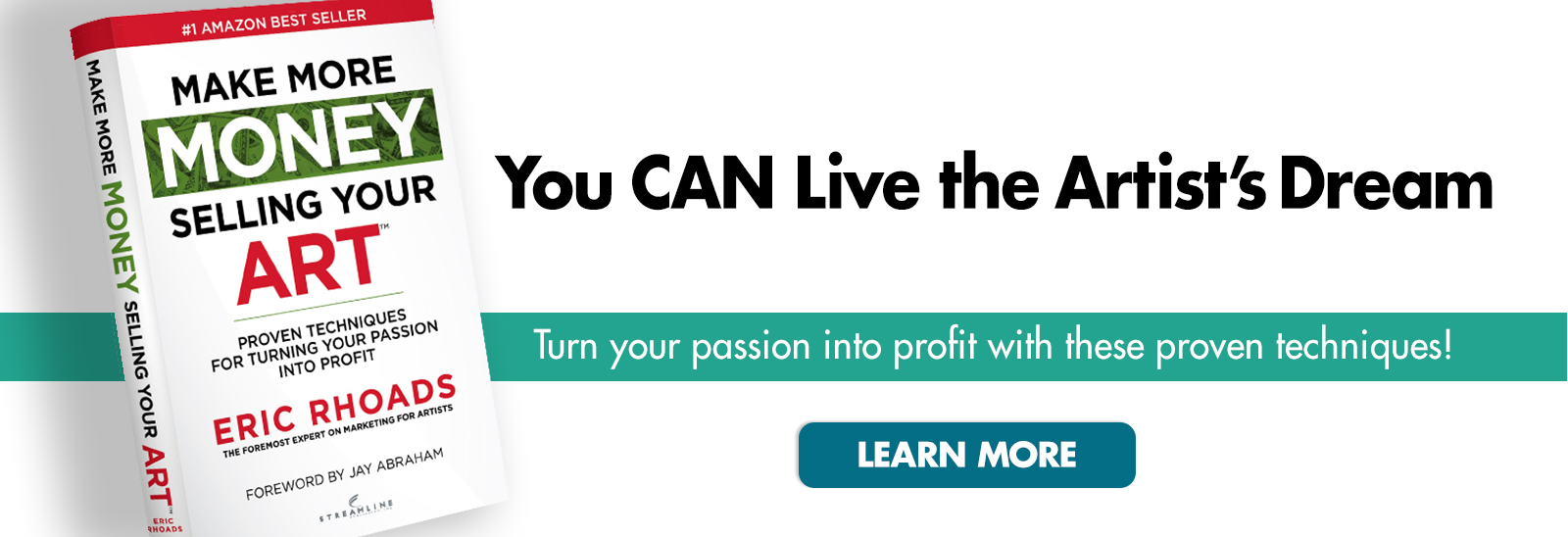Light shimmers on the wood plank floor of this old porch, glistening from last night’s rain. A hint of moisture in the barely cool air isn’t enough for a sweater. I’m feeling like a prisoner released after a stint behind the bars of winter. Freedom is mine; I can once again return to my porch without bundles of winter clothes and freezing fingers on my keyboard. I’ve never been a fan of winters — even mild ones.
Barriers in the Snow
Winter always meant barriers. For our friends who dared not leave home during the recent polar vortex, their barrier was cold. When I was in Sun Valley, Idaho, recently to paint on TV for an upcoming national TV show, I sucked it up, layered my limbs, and stood outside in the snow painting. My host, Lori McNee, and I drove around seeking the perfect spot for them to film us, but the barrier of unplowed roads limited our options.
Things Seem Overwhelming
Barriers are not only a problem in winter snow. They can be a challenge in life, in our careers, keeping our goals and big plans from happening. Too often when we see barriers, we allow them to slow us down or stop us. The truth is that we could have parked the car on the road and walked in with snowshoes, even though the walk to the ideal spot may have been a couple of miles. We opted not to do so out of respect for the camera crew, who would have been forced to haul equipment. Yet most barriers offer options: We could have hiked in, or we could have found someone to plow the road, taken a four-wheel drive vehicle, or patiently waited for the snow to melt.
Making Extra Effort
Barriers are often about inconvenience, about what we’re willing to go through. My old photography instructor Fred Picker told our class that the best photographs often come from the biggest barriers, because few people are willing to make the long hike, get up before the sun, bear the cold or heat, or patiently await the perfect moment. He has a famous photo of Easter Island with white horses running through the fields by the giant stone heads, dark clouds with a ray of light streaking down to light the horses. He could never have planned it, but he set up a shot and waited for hours, hoping something would happen. He got one split second to capture that image — because he had overcome the barrier of inconvenience.
Barriers are often what make us stuck. When we see them, our natural instinct is to turn away, rather than using thinking time to find alternatives. And sometimes alternatives may seem overwhelming, but they may require only a fractional effort.
Suddenly Unstuck
If your car is stuck in the snow, you can have five strong guys on the back end pushing while you try to drive, but the wheels smoke and spin and you dig deeper into the snow. Yet if you take a quarter-inch-thick piece of cardboard and wedge it under the wheels, traction is possible and their push moves the car out in just a moment.
If you’re in a boat and you’ve run aground, you’re not going anywhere. Yet if you can get the boat just a quarter-inch off the bottom, the boat is unstuck. The tide comes in just one quarter-inch, and you’re free.
No More Starving Artists
You may or may not know that I’m driven to help artists overcome this silly notion that artists just have to starve, so every morning at my Plein Air Convention I do about an hour and a half of marketing training. Frequently artists tell me, “I don’t know what to do,” because it’s all very overwhelming at first, and I tell them, “You don’t need to do it all, you just need a small step or two to get your boat a quarter-inch off the bottom. Once you’re unstuck, everything else is easier.”
Where Are You Stuck?
I spent 20 years stuck. I was busy, I was making an income, I had lots of activity, but when I looked back, I realized my wheels were spinning and I needed to do something different. A small piece of cardboard — which was my attending a Dave Ramsey event for entrepreneurs — gave me a couple of small ideas that became my quarter-inch of cardboard.
Sometimes we are so close to something, and we try so hard, we can’t see the problem. Or the problem seems so big, so overwhelming, that we’re not realizing that all we need is to pull up the anchor, or wait for the tide, or get a sheet of cardboard.
Unstuck After Two Decades
I got unstuck with a tiny sheet of cardboard, which was the act of attending something new. I fought the idea when my wife suggested it, because I was arrogant and thought I could come up with the answers on my own. People have told me hundreds of times that their life changed after attending the Plein Air Convention … sometimes for the marketing sessions, but also for the painting help. But I didn’t change their lives, I just provided the cardboard. They had just gotten to the point where they decided that maybe they don’t have all the answers.
Repeating Bad Solutions
Our biggest mistake is that we do more of the same in order to get the car unstuck from the snow. We hit the gas harder while the wheels spin faster, smoke more, and wear down the rubber and fill the air with exhaust, and we make no progress. The result is that we wear ourselves down, we get frustrated and depressed, and we feel like we’re helplessly stuck in a snowdrift in the middle of the night, fearing we will be stranded and freeze to death. We get so frightened that we finally start praying that some help will come along. Sometimes it does, sometimes not. So we start looking around for something to give us traction. We try dirt, we try sticks, we try logs, and any of them can work.
A Split-Second Difference
I discovered that all that spinning my wheels in life prepared me and made me smarter and gave me a little momentum, though I was stuck. Just like being in a car stuck in the snow, once you gun it on a piece of cardboard with some muscle pushing on the car, the car takes off, and you have to keep going full speed until you’re back to a stable place. You slide and wobble at that speed, but then you’re unstuck and free.
You’re the same. All your efforts to this point were not wasted. Once the cardboard gets you out of the rut, you’ll be driving fast, and your goals will come faster because you have readied yourself in other ways.
Acknowledge Where You Are
First, we have to acknowledge when we are stuck. When I’m stuck in a car, I don’t want to acknowledge it till I’ve spun my wheels in deeper. Once we acknowledge that, rather than being overwhelmed, we just have to find a quarter inch of something to give us traction. It requires thought, and some outside ideas are usually helpful. But seeing that we’re stuck is hard to do, and harder to admit.
A Bag of Tricks
A wise mentor once told me that when you have a problem, your tendency is to think about the problem and grab the first answer. Instead, he said, “Keep writing until you have 30, or 50, different answers. Don’t stop to judge them, just write down as many solutions as you can think of. Then before you judge, ask the question a few different ways and write down 30 more answers for each question, because the answers come from the right questions.”
Barriers can be overwhelming. Sometimes they are health barriers, people barriers, money barriers, family barriers, or things you are telling yourself are true that simply may not be.
Next Steps? Who Cares?
No matter what you’re facing, just remember you need a quarter-inch of cardboard, or to get a quarter-inch of water between the ground and the boat. Once you get free, the next steps will be easier. And you don’t even need to know what the next steps are yet. Just solve the quarter-inch problem and don’t sweat about what comes next.
I believe that you have a quarter-inch getting in the way of your big dreams. I believe you can figure it out. Rather than ruminating about a big problem, stop it. Just focus on one small problem, the one that will get you unstuck.
Let’s have a great quarter-inch day!
Eric Rhoads
PS: I’d like to give you an example of something that seemed like a big problem to me. I was hearing from a lot of people who were concerned about going to San Francisco for our Plein Air Convention because they were concerned about traffic and parking, and in some cases safety. It seemed like a big problem to overcome, but with the quarter-inch hiring of a traffic and parking consultant, we found ways to make sure our painting locations were properly selected to overcome that. A quarter-inch solution of creating an indoor painting arena where we project giant-screen video of the places we are painting gave us an optional approach for the people who want to stay put in the hotel and not drive, park, or feel unsafe. And a quarter-inch bus solution will also deal with those who want to go to the locations but not drive. By doing this, the boat was no longer stuck for those people.


Oh my….we are stuck people! It does take just a little to move, but we don’t always see it. I know i don’t.
Eric, your Sunday Coffee notes are so nice to read and think about…
The little cardboard pieces you did for PACE19, indoor painting and bus service, were so helpful for many. Thank you and your team for that!!
See you next year!! 🎨👍🏻
Thank you for your post. It really helps me to see where I am in this process and gives me insight on how to get to the other side.
Dear Eric,
I Read your Sunday posts with great enjoyment and thank you for sharing your expertise.
In today’s post I see Me! I’m sooo stuck and Don’t know which way to go? Help!
Best,
Anna
So very insightful! Love your analogies!
Once more, you have hit it out of the park! Thank you.
Hello Eric, What a surprise! I was up early this -9c cold winter Sunday morning, brewed a hot coffee and opened my email to find your inspiring Sunday Coffee article! This is my life right now, stuck! Isn’t it interesting how the right ideas come into your life when needed most! I’ve been struggling with this problem, feeling guilty over the lost time I believed I’d wasted, been reading books on procrastination, making schedules, on and on trying to solve my dilemma. And now here you are with the final answer! Now I can move on and become unstuck! What a relief, I feel so good this Sunday morning! Thank you!
I absolutely love your Sunday Coffee articles! You always write so beautifully and thoughtfully about subjects that I didn’t know I needed to read or think about! I take away volumes of inspiration! Thank you.